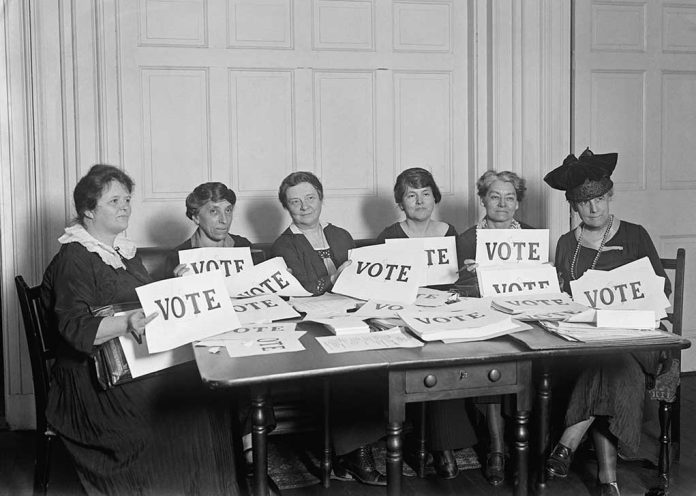
(LibertyInsider.org) – The right to vote is one of the most important privileges you have as a US citizen. It allows you to have a voice in the government, but, throughout history, many groups of people have had no right to vote.
The history of voting rights in America is long and storied. There were many ups and downs before we got to where we are today.
Control Over Voting Laws
One thing that hasn’t changed much about voting is that the states control the process and the rules. This power comes from Article I of the US Constitution. However, the federal government has stepped in over the years to ensure fairness in the system.
The Early Years
When the US became a country officially in 1776, the law allowed only white men over the age of 21 who owned land to vote. Eventually, many men began complaining about how the ownership of land was a ridiculous and unfair criterion.
States slowly began to remove this requirement, but, in 1868, the federal government got rid of it for good with the 14th Amendment. This law extended voting rights to all white men born or naturalized in the US.
It is important to note the voting laws mentioned thus far focused only on men. In 1869, Wyoming became the first state to grant suffrage to women. Various other states later followed suit.
The 14th Amendment also only applied to white men, so, in 1870, Congress passed the 15th Amendment, giving black men the right to vote. This did not go over well in the southern states, where lawmakers enacted laws to keep black men from voting. Known as Jim Crow laws, they implemented restrictions, such as poll taxes and literacy tests, to indirectly disqualify black men.
Movement in the 1900s
Women gained the right to vote through the 19th Amendment in 1920. In 1924, Native Americans finally got the right through the Indian Citizenship Act.
It wasn’t until 1964 that Congress took steps to knock down racial barriers to voting with the Civil Rights Act. This law allowed all men and women who were at least 21 years old to vote.
Many Jim Crow laws were still in effect, which continued to keep minorities from voting, so Congress enacted the 24th Amendment to eliminate poll taxes in 1964. In 1965, the federal government ended literacy tests with the Voting Rights Act.
Progress continued in the later 1900s, with the 26th Amendment in 1971 lowering the voting age to 18. This was a response to the outrage people felt that men aged 18 to 20 were drafted to fight in Vietnam despite having no say in the administration of public affairs.
In 1975, Congress renewed the Voting Rights Act, bringing about a permanent ban on literacy tests and expanding voting rights to everyone, regardless of their race or gender.
The most recent piece of voting legislation came in 1984. The Voting Accessibility for the Elderly and Handicapped Act addressed the remaining groups who often faced discrimination at the polls and required accessibility measures at all polling places.
Voting Today
Thanks to the work of legislators throughout US history, today’s requirements to vote are simple. You must be at least 18 years old, a US citizen, and a resident in the state in which you vote.
Copyright 2023, LibertyInsider.org














